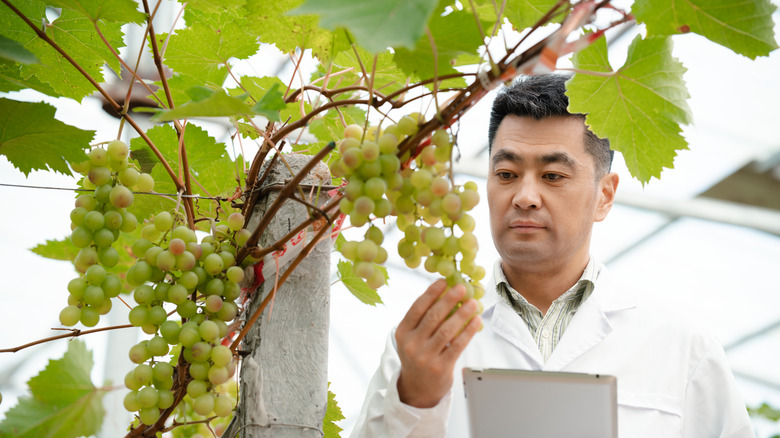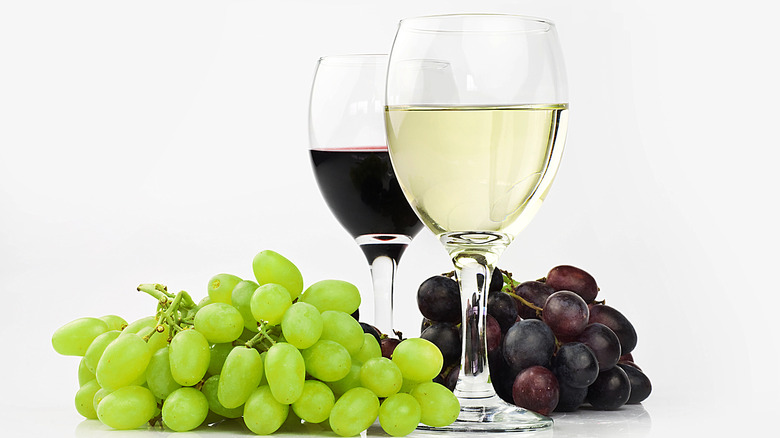One Country Produces A Bunch More Grapes Than The Rest Of The World
With their rolling vineyards and delicious wine, most people would expect Italy or France (which is the world's top wine producer) to lead the globe in grape production. But it was China who earned the top spot in 2023, producing 14,824,680 tons of the tasty fruit and around 15% of the world's total grape production (via World Population Review).
Italy took the second spot, producing 8,513,643 tons of the juicy treat — 6,311,037 tons fewer than China. And finally, the United States was the third-highest grape producer, producing 6,890,970 tons.
China, although the unlikely candidate for the top grape producer, has been growing grapes for nearly 2,000 years. Different types of grapes grow better in different climates, and what they are used for will determine where and how they're grown. To meet the different environmental needs of the different types of grapes, the fruit is grown in different regions with varying climates, allowing China to grow hundreds of variations of table and wine grapes.
In 2023, China exported nearly 533,000 tons of table grapes, which grow great in warmer climates (via Produce Report). China's Xinjiang region is known for producing most of the country's table grapes. It reaches an average summer temperature of a toasty 90 degrees Fahrenheit or higher and only sees about six and a half inches of rainfall per year.
China's grape (and wine) industry is growing
China's grape production has increased 200% in the past two decades, keeping pace with their growing wine industry. More than 400 wine companies and wineries have been established across the country since the late 1990s.
Wine grapes grow the best in more moderate climates compared to table grapes, but where they are grown and at what temperature will impact their taste and what wine they are used for. China's largest wine grape-producing region is Shandong, which reaches an average summer temperature of about 80 degrees Fahrenheit and receives an average of 20 – 40 inches of rainfall per year. The region produces about 40% of China's wine grapes and its cooler climates are suitable for both white wine and red wine grapes to grow. Grapes from the Shandong region are popularly used for Cabernet Sauvignon, Riesling, and buttery Chardonnay.
Looking ahead to the 2024 numbers, China's grape production is expected to exceed its 2023 numbers, showing five consecutive years of grape production growth.


